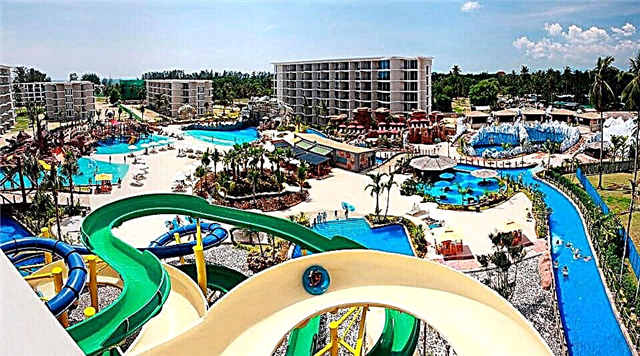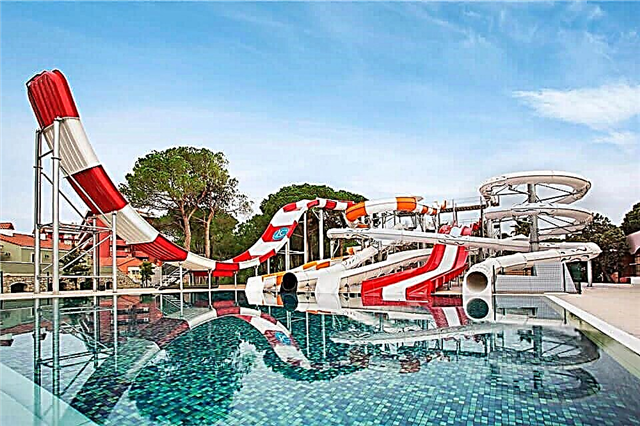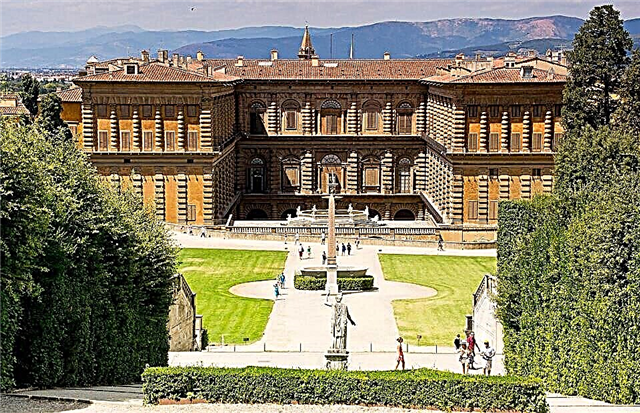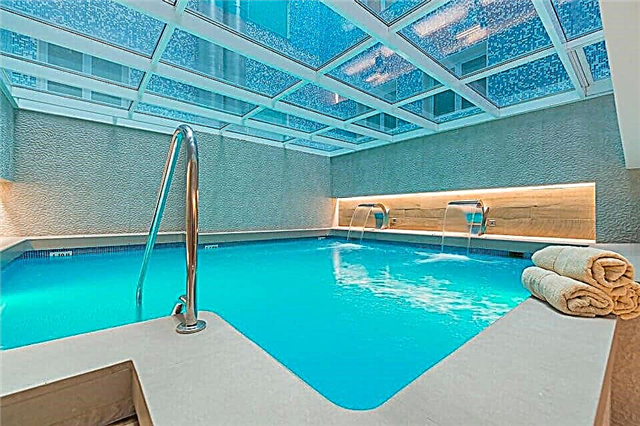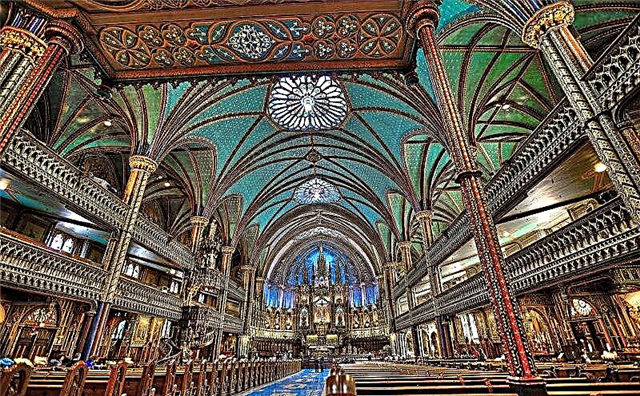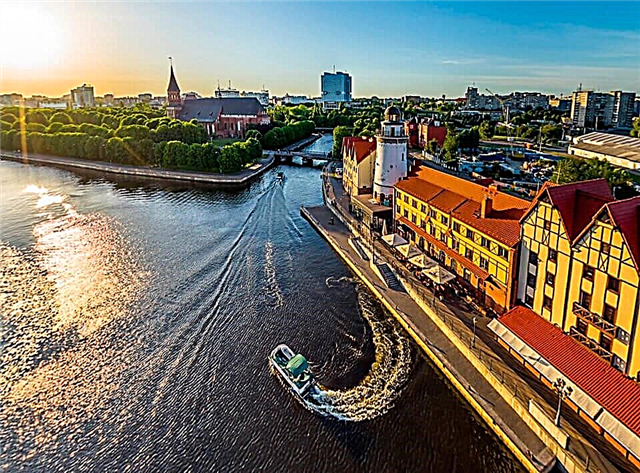Address: Russia, Moscow, Red Square
Start of construction: 1929 year
Completion of construction: 1930 year
Architect: A.V. Shchusev
Coordinates: 55 ° 45'13.2 "N 37 ° 37'11.7" E
Cultural heritage site of the Russian Federation
Content:
The place where the embalmed body of V.I. Lenin, has long ceased to be just a ritual tomb. It is considered a monument to a bygone socialist era and has the status of a museum. This is one of the main attractions of Red Square, which has already been visited by over 120 million people. Many tourists, regardless of their political convictions, specially come to the center of the Russian capital to pass by the sarcophagus with the body of the communist leader.

View of the Mausoleum, Red Square, the Kremlin's Spasskaya and Senate Towers
How did the idea of building a mausoleum come about?
The leader of the Soviet communists died on January 21, 1924. According to the official version, the idea to save his body belonged to the workers and peasants, who sent many telegrams to the government. In them, ordinary people asked not to carry out an ordinary burial.
Lev Davidovich Trotsky opposed the preservation of the body, but he was in the Caucasus and did not have time to return to Moscow for the funeral, which was scheduled for January 27. Researchers consider the version of the "popular will" unlikely, since the idea of embalming the body of the leader was not discussed in any way in the press, and none of the "numerous" letters was ever published anywhere.
According to another assumption, the idea of preserving the body appeared because not everyone had time to say goodbye to the deceased. Delegations from different parts of Russia and from abroad came to the capital one after another, so Lenin's widow N.K. Krupskaya agreed to place the body in the crypt before the end of the farewell ceremony. However, she has repeatedly spoken out against embalming.
Whatever the real reason, the country's leadership wanted to turn Lenin's body into a "red shrine" so that it would become an object of worship and a source of communist faith. Two days after his death, the leaders of the state firmly decided to keep Ilyich's body for as long as possible. Almost immediately, the famous architect Alexei Viktorovich Shchusev received an order for the project of the mausoleum. And the work of embalming the deceased was entrusted to academicians Vladimir Petrovich Vorobyov and Boris Ilyich Zbarsky.

View of the Mausoleum from GUM
History of the Kremlin tomb
The tomb was planned to be located on Red Square. By that time, its site near the Kremlin wall was already a necropolis. Here lay the dead participants of the October armed uprising of 1917, and some party leaders were buried. When the Civil War was going on, the Red Army men took an oath in front of the graves, and in peacetime they held parades and demonstrations on the square.
The first mausoleum was built on the day of the official funeral - January 27. There were severe frosts, so the frozen ground had to be blown up with dynamite. The building was erected in great haste, and there is evidence that the last nails were driven in just before the ceremony of demolishing the body in the Funeral Hall. The tomb was never completed, and it stood in half-finished form until the spring of 1924.
The second mausoleum was also made on a wooden frame and sheathed with varnished oak. It was ready by August 1924 and served for six years. And then it was replaced by a stone mausoleum that has survived to this day.
When the Great Patriotic War began, the building of the tomb was disguised as a residential building. These precautions were necessary to preserve the monument during the Nazi air raids. In the summer of 1941, when German troops were advancing on all fronts, the body of the communist leader was evacuated to Tyumen. It was kept in the building of the Agricultural Academy, and in April 1945 it was returned to the capital.
From 1953 to 1961, Stalin's embalmed body lay next to Lenin's body. And in the 1980s, an extension with an escalator was made behind the building of the mausoleum, with the help of which the elderly leaders of the country climbed to the podium.

View of the Mausoleum from Red Square
Architectural features
The mausoleum fits perfectly into the architectural ensemble of Red Square and looks harmoniously against the background of the jagged Kremlin wall. The building has a width of 24 m and a height of 12 m. It looks like an Egyptian pyramid and is composed of five steps, built of their strong and durable reinforced concrete structures and bricks. The tomb was decorated with granite, porphyry (crimson quartzite), marble and black labradorite. And above the entrance, the name of the communist leader is written in red letters.
During parades, heavy equipment often passes through Red Square. To prevent the architectural structure from experiencing serious problems from shaking, the pit, where the reinforced concrete foundation slab is located, is covered with clean sand. The last reconstruction of the building was carried out in 2013 - the builders strengthened its foundation.
For many years, Soviet leaders and leaders of the Communist Party spoke to the people from the rostrum of the mausoleum. However, since 1996 this practice has been discontinued. Today, when mass festivals are held on Red Square, the mausoleum is fenced off with shields.
The Kremlin tomb is considered an integral part of the main square of the Russian capital. It is protected by UNESCO and listed as a World Heritage Site.

Entrance to the Mausoleum
What can be seen inside
The tomb is always quiet. Visitors walk one after another along the same route and stay in the mausoleum for about a minute. Twilight reigns inside the building.
The funeral hall, where the sarcophagus is installed, is a 10 m by 10 m square room. It is decorated in black and red and has a stepped granite ceiling. Opposite the entrance to it there is a USSR emblem of the 1930 model carved out of stone. However, due to the faded lighting, it is almost impossible to see fine details.
Lenin's body rests on a dais in a bulletproof glass sarcophagus, which is framed by a granite railing. Such precautions were taken in 1973. Lenin wears a black suit, and on the left of it you can see the badge of a member of the Central Executive Committee of the USSR. The figure of the communist leader is specially illuminated so that those passing by could see the features of his face. It is in stark contrast to the dark environment and therefore appears to be like a hologram.
In addition to the Funeral Hall, there is a black columbarium room in the mausoleum, in the niches of which it was planned to preserve the ashes of other deceased. But this room was never used, and visitors are not allowed there.
Information for tourists
The mausoleum is open on Tuesday, Wednesday, Thursday, Saturday and Sunday from 10.00 to 13.00. During the restoration work, the schedule usually changes, but this is announced in advance. You can get to the mausoleum free of charge through the checkpoint in the Nikolskaya Tower, located on the side of the Alexander Garden. Queuing usually takes about 30-40 minutes.

View of the Mausoleum from the side of the Spasskaya Tower
Bulky bags, backpacks, containers with liquids and large metal objects cannot be brought into the mausoleum. If tourists have such luggage, they deposit it in a paid storage room, which is located in the Alexander Garden, near the Kutafya Tower. Everyone who wants to get into the mausoleum must go through a metal detector.
Photos and videos cannot be taken inside the tomb. Mobile phones and gadgets are also required at the entrance. If they stayed during the visit, the guards have the right to view the latest footage, and, as a rule, ask visitors to delete these files. Men need to remove their hats near the sarcophagus.
It should be borne in mind that the entire area around the Moscow Kremlin and especially the Red Square are under round-the-clock surveillance by video cameras. Tourists who come here are recommended to have a passport or other identity document with them.
How to get there
The most convenient way to reach the mausoleum is to walk from the Moscow metro stations Okhotny Ryad, Ploshchad Revolyutsii, Teatralnaya, Kitay-Gorod, Lubyanka, Borovitskaya, Aleksandrovsky Garden or Library named after Lenin ".

View of the Mausoleum from the Nikolskaya Tower
If you wish, you can also drive up to Red Square by ground transport. By buses № М1, М2, М3, Н1, Н2 and 144 they get to the stop "Manezhnaya Ploschad", and by buses № М5 and 158 - to the stop "Red Square". From both stops to the mausoleum about 650 m - 10 minutes on foot.


